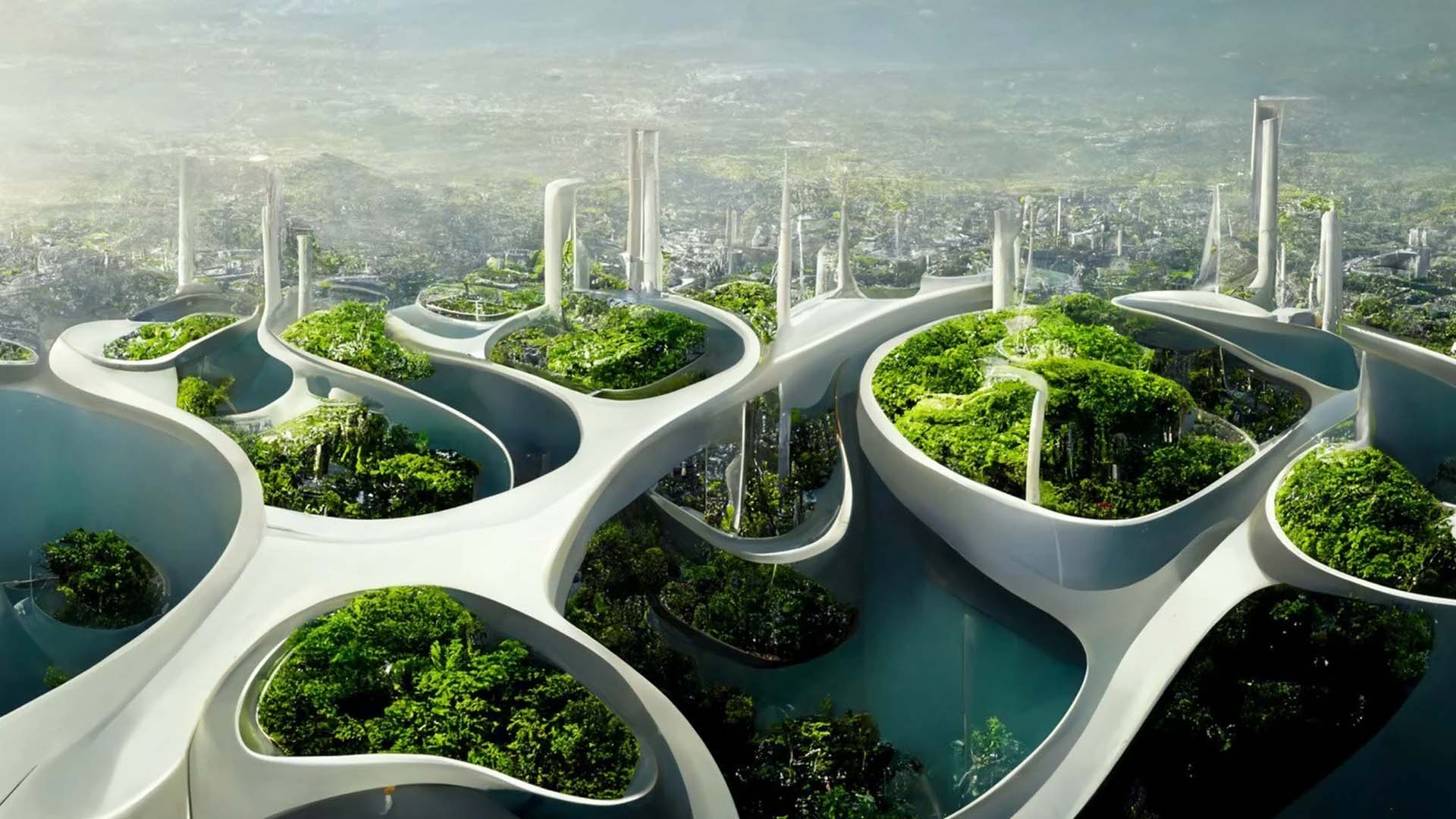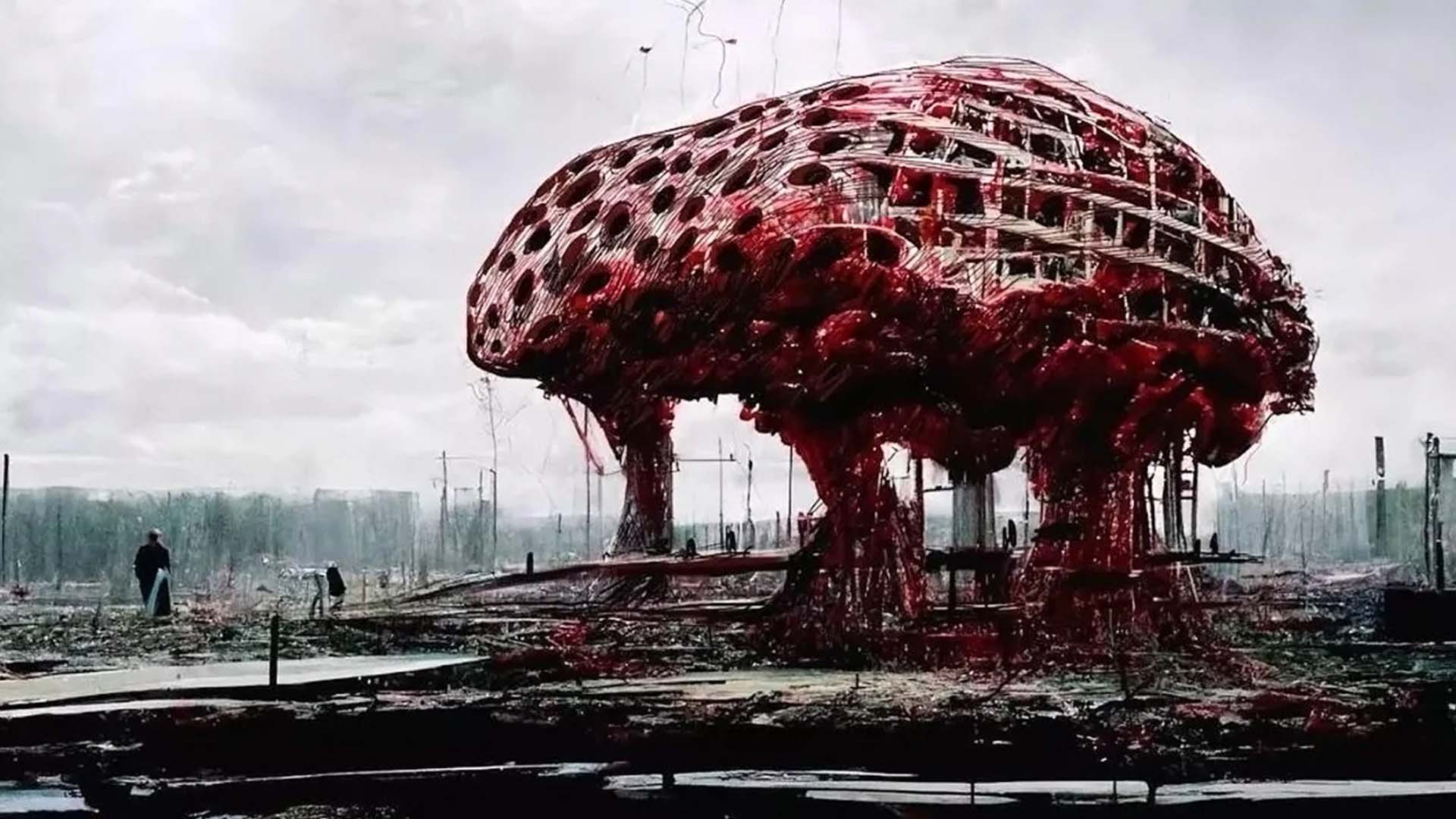From education to real estate to retail, the recent growth of artificial intelligence (AI) impacts nearly every industry. The architecture industry is no exception, with architects using AI models and programs like Midjourney, DALL-E, and DALL-E 2 to visualize and create spaces. Here are a few ways that these AI programs can and have helped architects.
Boost Creativity
AI programs generate images from text descriptions by using a dataset of text-image pairs. Users simply type in a text prompt, and the program will create the image.
This can spark creativity in architects and their architecture because the text prompts allow users to combine unrelated concepts, anthropomorphized versions of animals and objects, and more. The below image, for example, was created when a user prompted DALL-E with “an illustration of a baby daikon radish in a tutu walking a dog.”

Some architects, like Maria-Cristina Florian, believe that the ease of combining seemingly unrelated concepts will inspire and “…encourage designers to explore a greater number of design possibilities from a new perspective.”
Kory Bieg, the program director for architecture at the University of Texas at Austin, agrees, noting that AI programs allow for practically unlimited design capabilities, including conventional design, avant-garde projects, and utopian world-building.
As Bieg points out, “AI is surprisingly good at composition and cross-referencing a complex web of architectural histories, styles, and contexts—things that even experts in our field often lose sight of.”
Even though Florian and Bieg approach AI programs in architecture with slight caution, both recognize that the technology has the power to completely transform architects’ creativity and inspiration.
Preserve Heritage
AI systems can also help architects preserve cultural heritage and historical architecture. For example, Intel partnered with the China Foundation for Cultural Heritage Conservation (CFCHC) to preserve the Great Wall of China. The Great Wall stretches over 13,000 miles, and many of its areas are difficult to reach. This presents a difficult challenge to architects and historians working on the Wall’s preservation.
To combat this challenge, Intel and CFCHC used drones and AI in an advanced 3D application. The drones gathered thousands of photos that AI analyzed to pinpoint which areas in the Wall needed restoration.
As Alyson Griffin, Intel’s Vice President of Global Marketing, explained, “With precise information about where repairs are needed and what is required, the work can be done much more quickly, efficiently, and cost-effectively.”
Aid Creation, Design, and Construction
In the past, many architects used Computer-Aided Design (CAD) to design structures with 2- and 3-D models. Now, AI-powered software like Building Information Modeling (BIM) takes designing and planning to the next level by giving architects the full picture of a structure.
This includes an analysis of each object’s size and material, the cost of manufacturing, construction, operation, materials, and maintenance, and even renovation or demolition plans. With AI, architects can identify trends and inefficiencies in the data which allows them to design better projects in a shorter amount of time.
Stephen Coorlas, the founder of Coorlas Architects, demonstrated how another AI platform, Midjourney, can be used in the creation of construction documents. Coorlas creates traditional construction documents, inputting specific data about construction methods to train the AI software to develop the details of the documents. After developing the design, he populates the set of drawings with custom details, and the AI platform brings it alive.
To show his process and ideologies for Midjourney, Coorlas provided an introductory level video tutorial for architects who want to learn more about AI-assisted design. As Coorlas notes in the video, “It is our responsibility as designers to continue imagining outside the realm of current technological capabilities.”
Explore Sustainable Architecture
Architects can also use AI to envision and plan for future architecture. For example, architect and designer Manas Bhatia’s AI x Future Cities series imagines the future and possibilities of sustainable architecture.

Bhatia’s AI-generated images depict a sustainable utopian city adorned with skyscrapers covered in algae and biophilic air-purification towers to reduce carbon emissions. According to Bhatia, “It is evident that AI will improve and produce detailed architectural drawings as it develops. This would significantly increase the effectiveness of the architectural design process and allow architects to explore novel design ideas without taking too much time to develop their vision.”
Also using Midjourney, architect Mohamad Rasoul Moosapou dreams up a future much further from reality. In his new series called Archi-creatures, Moosapou explores a future in which architecture and infrastructure are based on a physiological perspective.

These AI-generated images, photos, and models of buildings show living objects that are combined with buildings. The result is semi-alive buildings engulfed by living organisms. Although less realistic than other uses of AI tools, Moosapou’s series proves how AI can completely transform architecture as we know it.
For more architecture news, check out the world’s first net-zero city, Los Angeles’ newest skyscraper, the evolution of museum architecture post-pandemic, and buildings inspired by nature.







